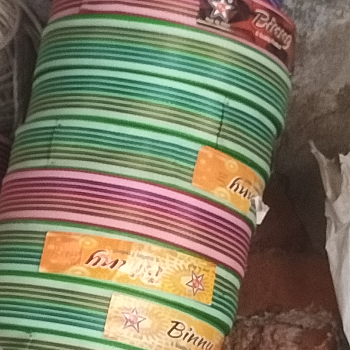In the heart of Rajasthan, where the sun kisses the earth with golden hues, lives Meera, a talented artisan. For generations, her family has been weaving vibrant charpais and intricate handicrafts, a tradition that not only sustains their livelihood but also keeps the cultural heritage alive. However, Meera has been facing a challenge that many like her encounter—finding the right materials that are both durable and affordable.
Enter plastic niwar, a simple yet transformative product that is changing the lives of artisans like Meera across India.
But what is plastic niwar, and how is it making such a significant impact? Let’s delve into Meera’s story to find out.
Meera’s Dilemma
Meera, like many artisans, had been using traditional cotton niwar. While it had its charm, it often succumbed to wear and tear, especially during the monsoon season. The frequent need for repairs drained her resources and time, impacting her income and the quality of her work. Meera needed a solution—a material that could withstand the elements and retain its vibrant colors.
The Introduction of Plastic Niwar
One day, Ramesh, a fellow artisan from a neighboring village, visited Meera. He spoke passionately about a new material he had discovered—plastic niwar. Intrigued, Meera listened as Ramesh explained how this niwar was not only durable but also resistant to moisture and fading. It was a game-changer for him, allowing him to create products that lasted longer and fetched better prices in the market.
The Transformation
Meera decided to give plastic niwar a try. It was a decision that would transform her craft. She noticed an immediate difference; the plastic niwar was easy to work with, and her charpais were sturdier and more vibrant than ever. Customers began to notice, and soon, her creations were in high demand.
With the increased durability, Meera spent less time on repairs and more on innovation, experimenting with new designs and patterns. Her income rose steadily, and she could afford to send her children to school, something she had always dreamed of.
Solving Practical and Emotional Challenges
The story of Meera highlights the dual impact of plastic niwar. Practically, it addresses the significant problem of material durability and affordability, crucial for artisans who rely on their craft for their livelihood. Emotionally, it empowers artisans by enhancing their work's quality and allowing them to take pride in their craft, knowing that their creations can stand the test of time.
A Broader Impact
Meera’s success story is not isolated. Across India, countless artisans are benefiting from plastic niwar. In the vibrant markets of Gujarat, to the bustling streets of Uttar Pradesh, plastic niwar is empowering artisans, preserving cultural heritage, and improving quality of life.
Plastic niwar is more than just a material; it is a catalyst for change. For artisans like Meera and Ramesh, it has opened doors to new opportunities, allowing them to preserve their rich cultural heritage while adapting to modern demands. It is the unsung hero of the handicraft industry, driving a quiet revolution that is transforming lives across India.
So, the next time you see a beautifully crafted charpai or a vibrant handicraft, remember the artisans behind it and the role that plastic niwar plays in their lives. It is a testament to how the right materials can solve practical challenges and bring about emotional empowerment, creating a ripple effect of positive change in communities.
By embracing plastic niwar, artisans are not just crafting products; they are weaving a brighter future for themselves and the generations to come.
Visit Vyaparify Site:
https://id.vyaparify.com/chhajju-ram-arjun-kumar 
